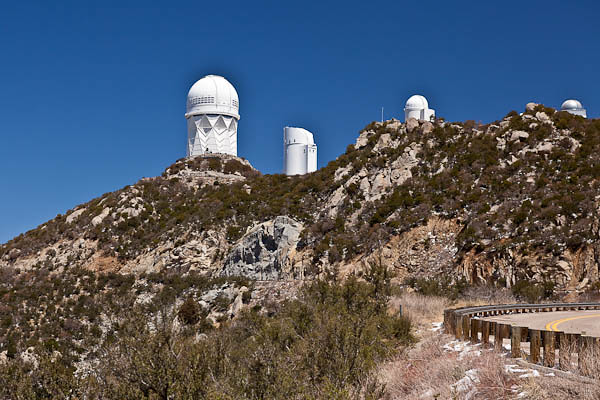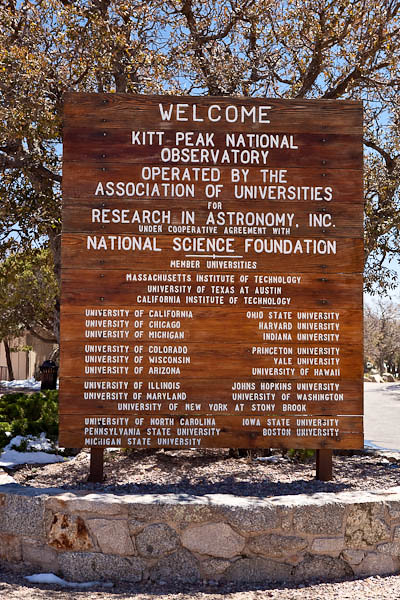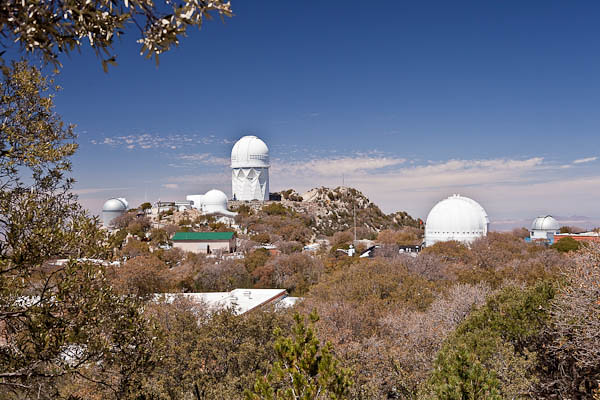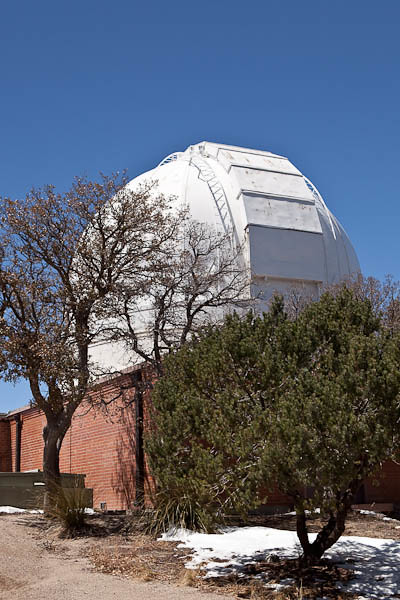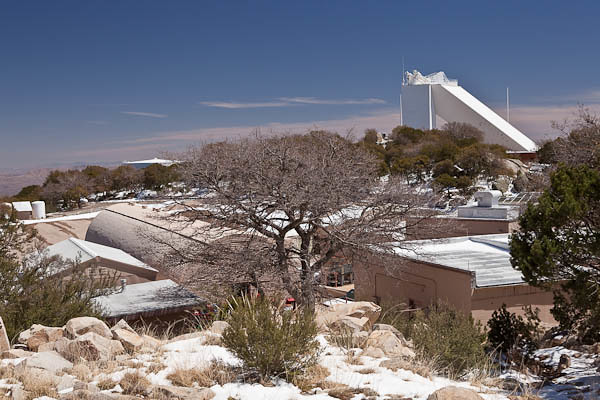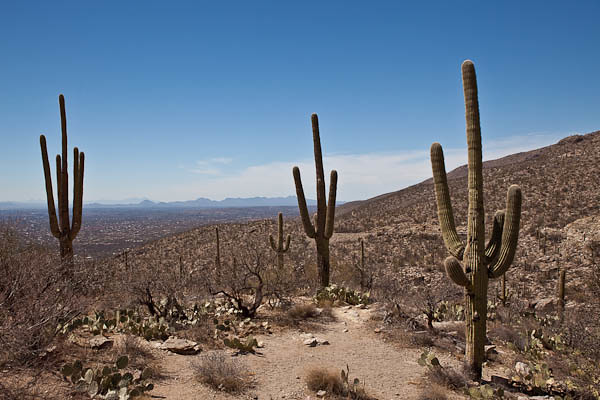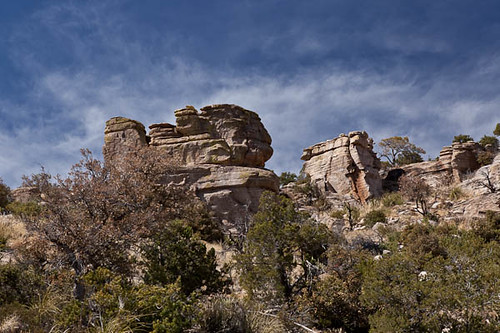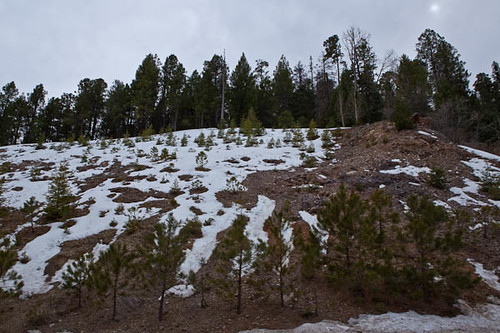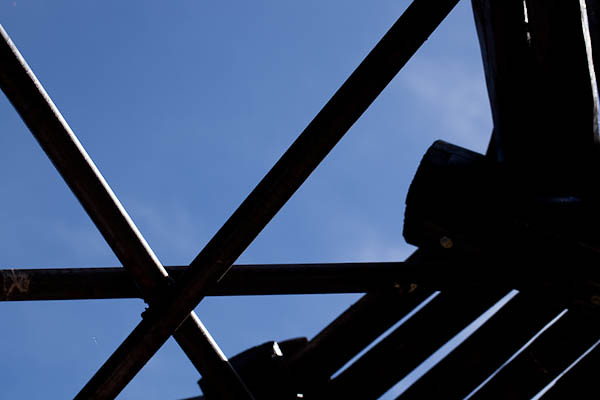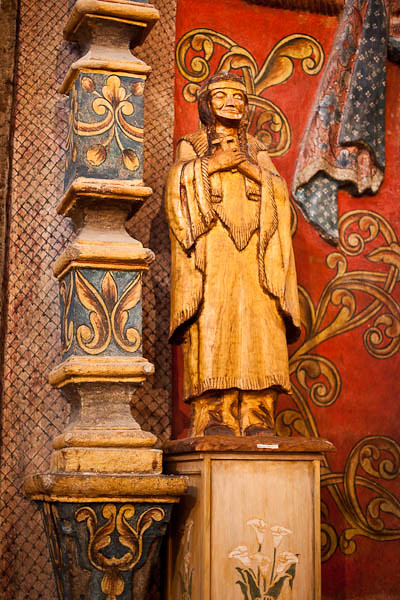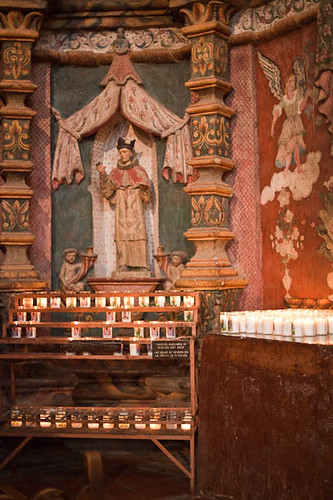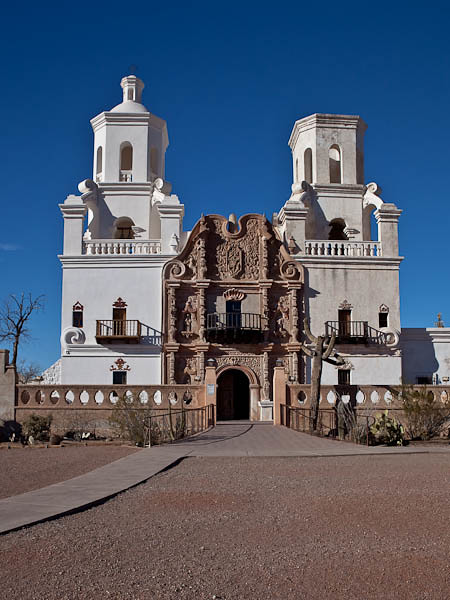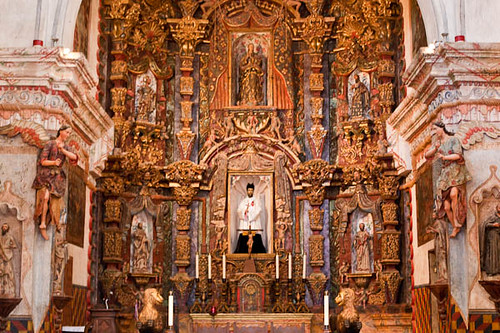My younger daughter flew in for a weekend visit just before it was time for me to leave Tucson. She loves science, any kind of science, and so we drove to Kitt Peak to see the National Observatories.
The white domed observatories on top of the 6,875 foot summit aren’t the only an amazing sight on the 50 mile trip west of Tucson. There is also plenty of breath taking desert and mountain scenery on the drive. We drove the first 45 miles on paved roads through the Tohono O’odham Reservation and the Sonoran Desert. The last 12 miles were on a maintained mountain road with patches of snow — from a mid-April storm a few days before we visited — and spectacular views of the desert floor and snow spattered, adjacent mountain ranges. (Next post!)
Kitt Peak National Observatory is operated by an association of universities throughout the country (including the University of Wisconsin at Madison) in cooperation with the National Science Foundation. We even saw a Bucky Badger decal on one of the scientists lab stands. My daughter is an alum of UW, so she was pleased to see the Wisconsin mascot on duty at one of the observatories.
This is the largest collection of optical telescopes in the world. It’s a rather amazing display of scientific buildings, all clustered on the very top of a desert mountain.
The tallest telescope in the photo is the Mayall 4 meter (158 inch), one of the world’s largest telescopes. It resides in an 18-story building. There is an elevator that provides access to the 10th-floor observation deck and panoramic views of southern Arizona and northern Sonora, Mexico, but this particular telescope was closed the day we were there.
Just one more reason for me to return to Kitt Peak at a later date. I’d also love to stay for the night show and see the stars using one of the observatory’s telescopes.
This is one of the more unusual buildings on the peak. It is the McMath-Pierce Solar Telescope which produces a 30-inch image of the sun by using mirrors in a slanted 500-foot corridor. Only 200 feet of the tunnel are visible, the other 300 feet are below ground level. You can go inside the building and check out the long chamber and view the mirrors. Not only is this telescope a scientific wonder, it is also an architectural wonder. It even won an architectural award in 1962, rather an unusual accomplishment for an observatory.
This is one of the smaller telescopes, and one used by visitors during the nightly viewing tours. The larger telescopes are reserved for professional and student astronomers, though even they have to play a form of astronomy-roulette. They sign up for a viewing time months or years in advance and if their chosen evening’s view is obstructed by clouds, they have to sign up on the list again. Luckily there are only a few cloudy evenings each year in this part of the Sonoran Desert.
The 2.1-meter (84 inch) telescope was the first large instrument on Kitt Peak for night-time observing. We were able to go inside for a close-up view of the inner workings, plus view an educational exhibit on the telescope. Astronomers use this scope to observe distant stars and galaxies in both the visible and infrared spectra.
On the day we were there, we watched as the telescope opened and closed several times.
One last photograph, proving that, yes, it does snow on the peaks of desert mountains. I thought I had escaped winter’s snow by coming to Tucson, but my daughter was delighted to see the snow, and stomp in it, and make a few snowballs to throw at me.
Seems she thinks the desert is too hot and prefers Wisconsin winters to Tucson winters. Amazing!
Reminder: I am having a drawing for one of my photographs or a set of photo art note cards in appreciation of all the support my blog readers gave me while I was on my Tucson adventure. To enter the drawing, leave a comment on the April 13 post — check out the drawing information and directions on how to enter.
——————–
Bo Mackison is a photographer and owner of Seeded Earth Studio LLC. She has been living in Tucson for the last ten weeks, exploring Arizona and living life “solo.” she is now on her way back to Wisconsin, but will be posting photographs from a few more Arizona destinations.
